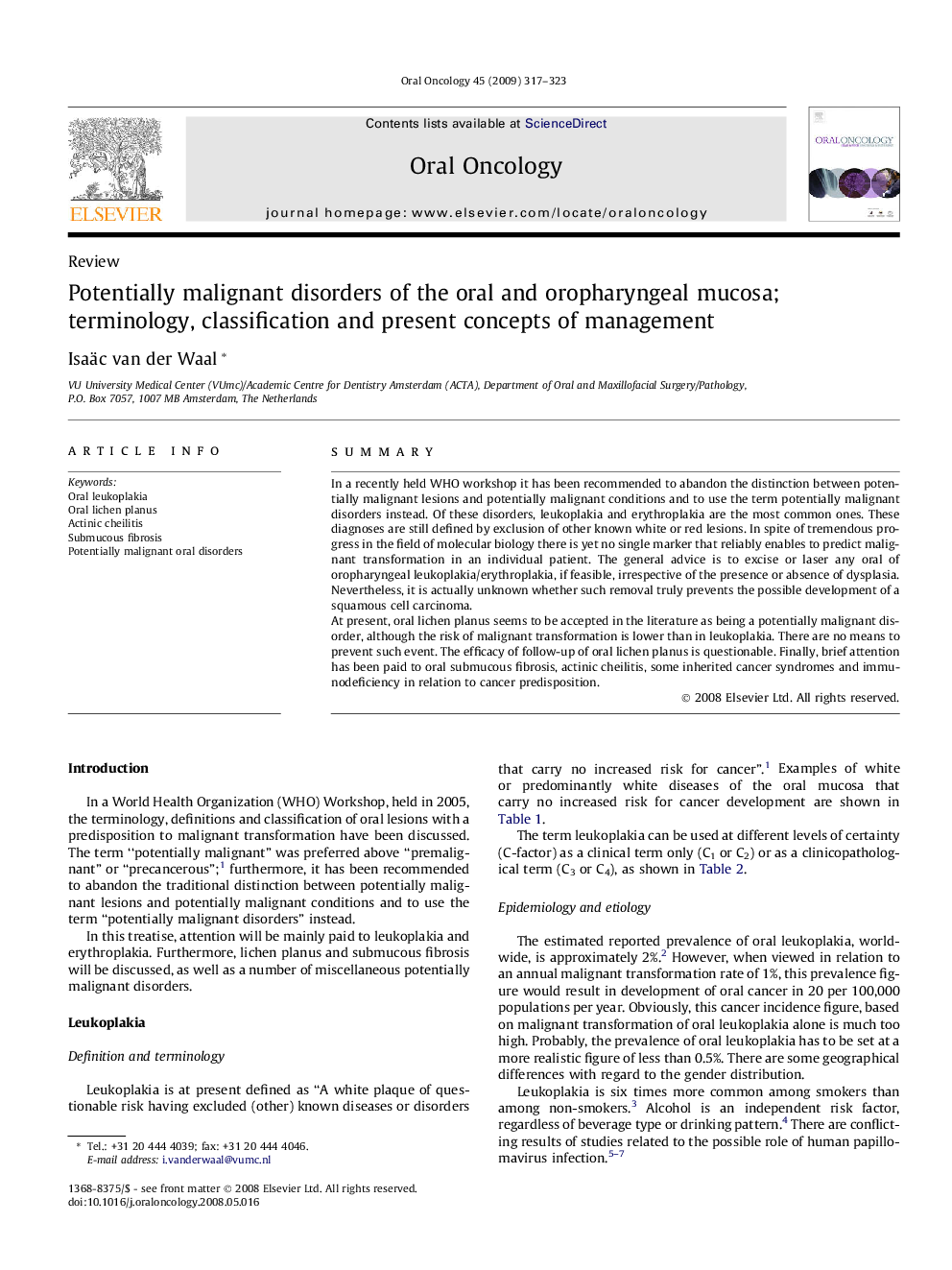| Article ID | Journal | Published Year | Pages | File Type |
|---|---|---|---|---|
| 3165513 | Oral Oncology | 2009 | 7 Pages |
SummaryIn a recently held WHO workshop it has been recommended to abandon the distinction between potentially malignant lesions and potentially malignant conditions and to use the term potentially malignant disorders instead. Of these disorders, leukoplakia and erythroplakia are the most common ones. These diagnoses are still defined by exclusion of other known white or red lesions. In spite of tremendous progress in the field of molecular biology there is yet no single marker that reliably enables to predict malignant transformation in an individual patient. The general advice is to excise or laser any oral of oropharyngeal leukoplakia/erythroplakia, if feasible, irrespective of the presence or absence of dysplasia. Nevertheless, it is actually unknown whether such removal truly prevents the possible development of a squamous cell carcinoma.At present, oral lichen planus seems to be accepted in the literature as being a potentially malignant disorder, although the risk of malignant transformation is lower than in leukoplakia. There are no means to prevent such event. The efficacy of follow-up of oral lichen planus is questionable. Finally, brief attention has been paid to oral submucous fibrosis, actinic cheilitis, some inherited cancer syndromes and immunodeficiency in relation to cancer predisposition.
